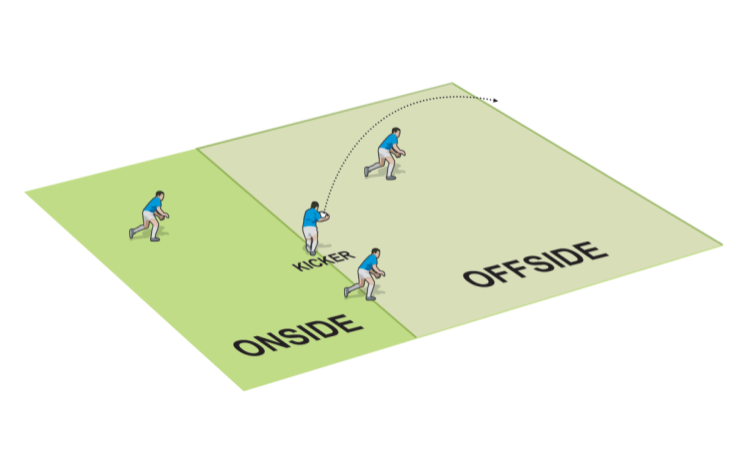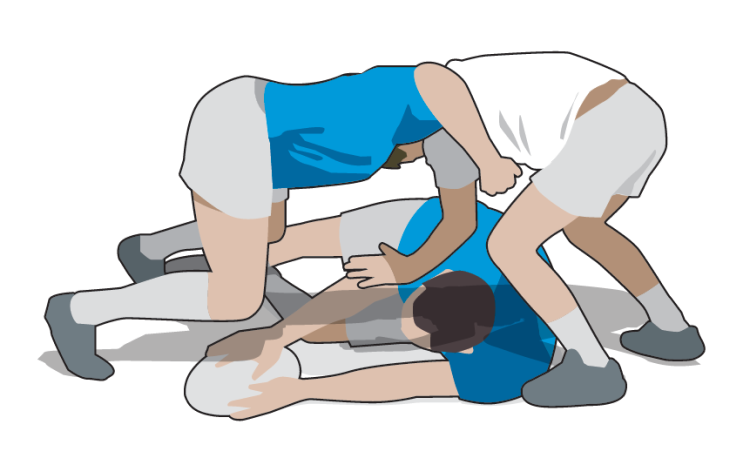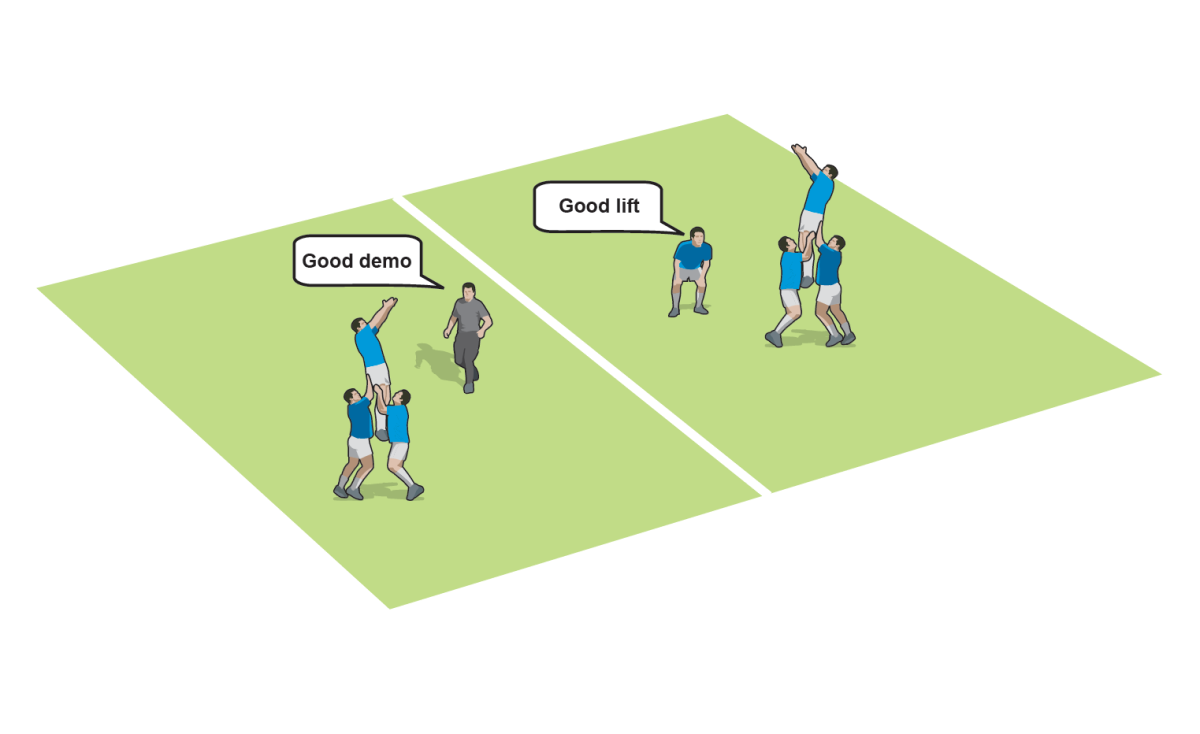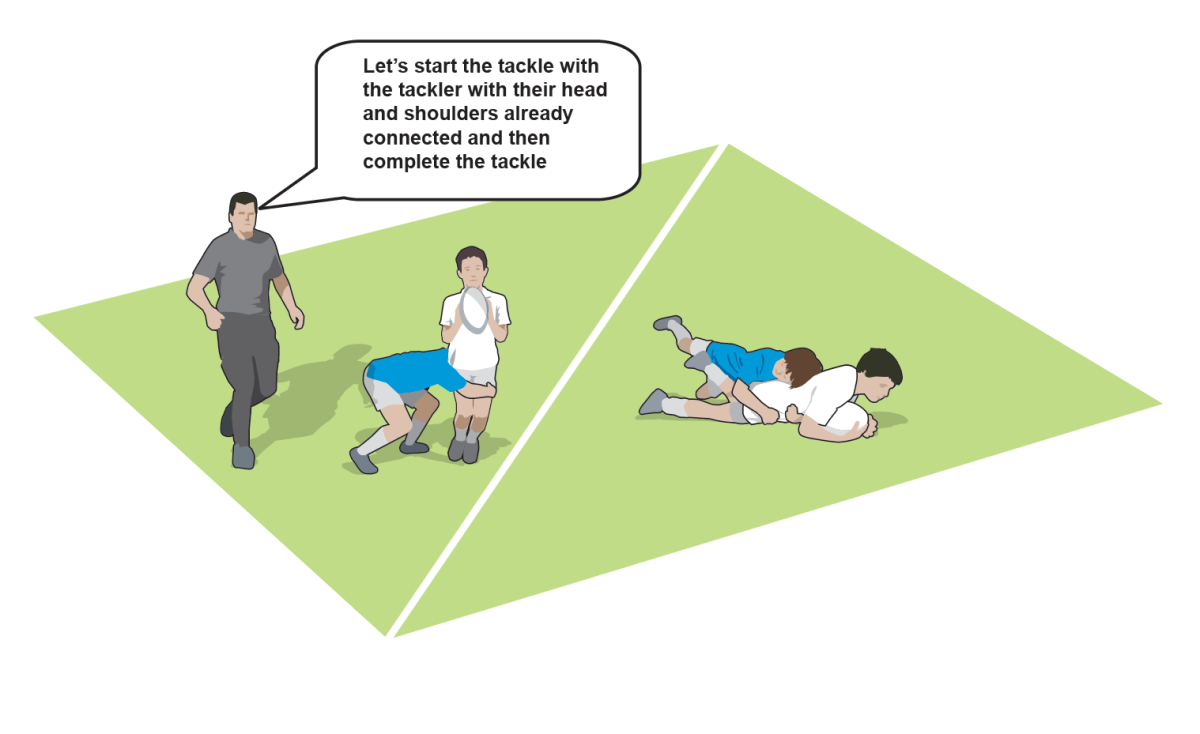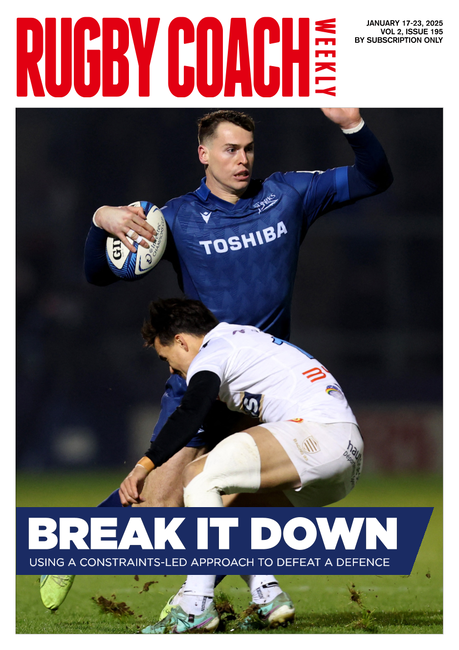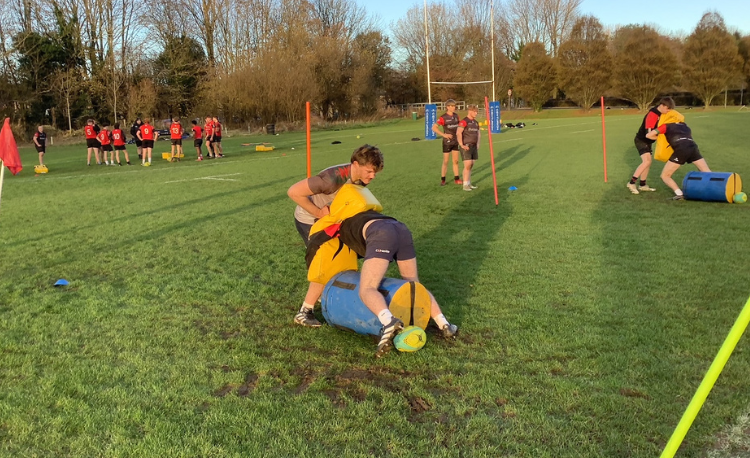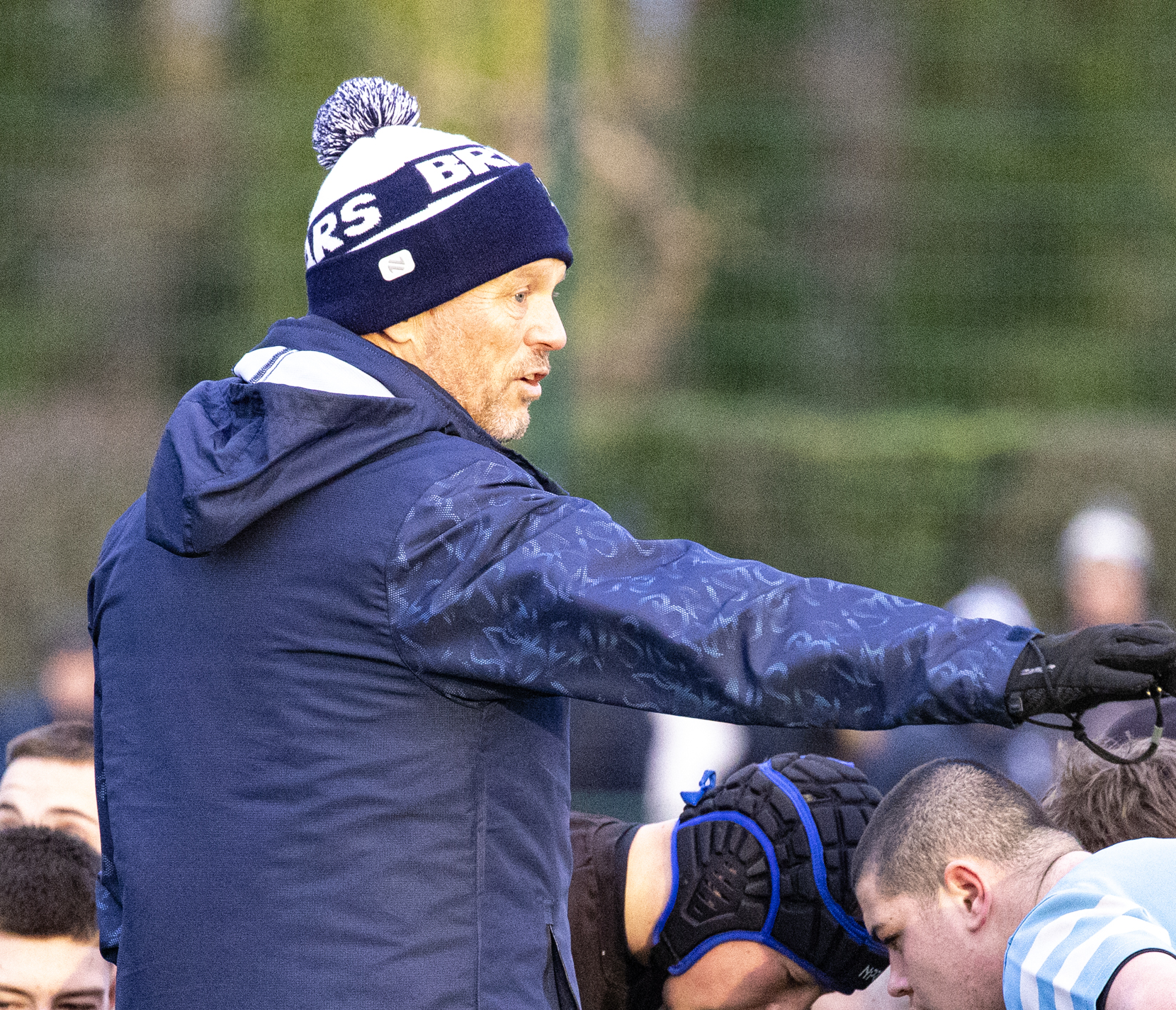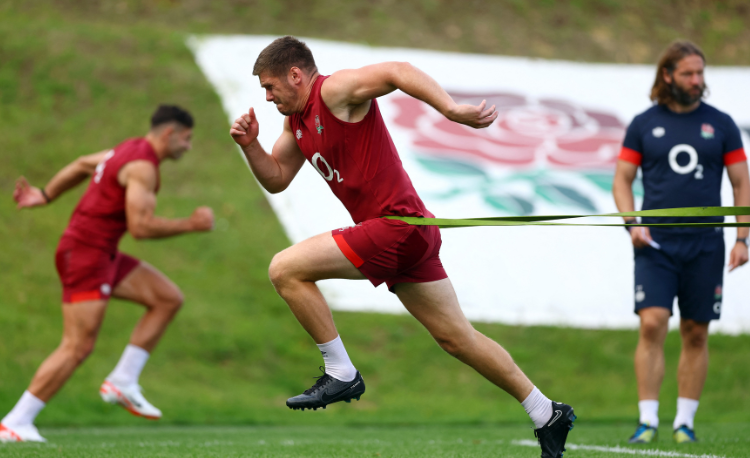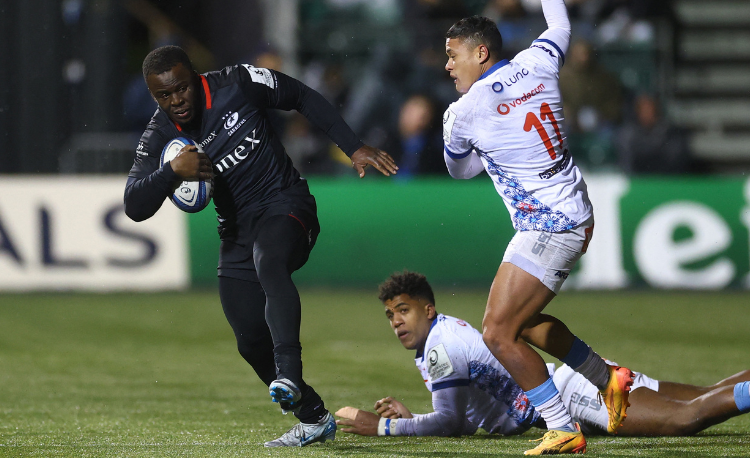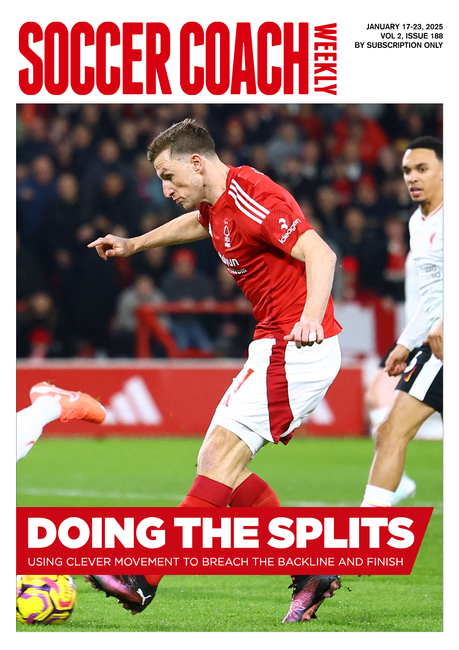Five ways to build players' confidence
MASON DAVIES on giving youngsters the tools to learn.
One of the persistent problems I face as a coach is player confidence – or, more specifically, a lack of it.
Perhaps this is all part and parcel of being a high-school rugby coach, with a regular influx of new players.
In fact, the very nature of the young people we coach means that many are yet to develop the mental resilience that comes with age and experience.
This isn’t a problem specific to youth rugby, though. How many times do we hear professional coaches and commentators talk about players either lacking, or being low on, confidence?
This issue reaches across all domains. As a teacher, I experience it regularly in the classroom.
Fortunately, there is a growing confidence within the education community about how to build confidence in the classroom effectively.
Well-respected former headteacher, author and professional learning expert Tom Sherrington has written an excellent blog about the five ways teachers can build confidence in the classroom.
And, as coaches, we can also apply these approaches in our training sessions to boost our players.
1. Consolidation
What is it? Taking every opportunity to go over things repeatedly so that students ‘overlearn’ and consolidate what is taught.
In the classroom, this might look like:
- Summarising key points frequently.
- Asking the same question to multiple students and repeating the key elements of any good answers as you go.
- Giving lots of examples for the same idea.
- Independent practice must be things you have already practised together so that practice is low stakes and non-threatening.
Transferring this to the field might look like:
i) The coach repeating and modelling the technique/instructions three times.
ii) The coach repeating steps, emphasising the key phrases.
iii) The coach asking three players to repeat the process/technique/instructions.
iv) The coach asking three players to demonstrate the process/technique/instructions.
v) The coach getting players to practise the process/technique three times.
Example: Setting up for a tackle
i) "When we set up for a tackle, we must ensure we are in the ring, that we hinge our bodies by bending at the knees, that our hands are in front of us and our eyes are at the level of the bum cheek area”. Repeat x2.
ii) “Remember: ’Ring, hinge, hands in front, eyes at bum cheek level’." Repeat x2.
iii) "Player X – can you repeat the process for everyone to hear, please?". Repeat with two different players, highlighting after each answer the key points and/or correcting any mistakes.
iv) "OK, Player Y, can you show us what this should look like, step-by-step, please?”.
v) "We are now going to practise this three times. Pair up. Your partner should remind you of our four steps: ring, hinge, hands in front, eyes at bum cheek level”.
2. Explicit rehearsal
Related Files
What is it? Practice using a specific skill or a piece of knowledge before applying it. Rehearsal can happen individually, in pairs, in groups or as a whole squad.
In the classroom, this might look like:
- Choral response – involves all students giving a verbal response simultaneously when the teacher signals. This can be key vocabulary or a particular instruction, such as the following...
Teacher: “When I say photosynthesis, you say it back together…1, 2, 3..." – Whole class: “Photosynthesis!”
Or it can be when a teacher poses a question, and students must answer in unison...
Teacher: “What is the capital of France?”
Whole class: “Paris!”
- Explaining something to a partner – this can often be scaffolded with prompts, such as sentence starters and vocabulary lists.
- Student summarises a concept or explanation in their own words.
Transferring this to the field might look like:
i) The coach using choral response by asking players to repeat instructions for a drill, tactical move or technique.
ii) The coach asking players to explain a drill, tactical move or technique to a partner.
iii) The coach asking players to repeat key drills, tactical moves or techniques in their heads before picking players to repeat aloud.
Example: Making a tackle
i) Coach: “Repeat after me. The four main steps in making a successful tackle are: cheek-to-cheek, ring of steel, slide down towards knees, fall. What are the four steps for making a successful tackle?” – Players: “Cheek to cheek, ring of steel, slide down towards knees, fall!"
ii) Coach: “Find a partner – tell them/demonstrate the four main steps for making a tackle. Take it in turns”.
iii) Coach: “On your own for 30 seconds, repeat the steps for a successful tackle in your heads. After 30 seconds, I’ll pick two players to recap for me, so make sure you are all thinking."
3. Repeated short feedback loops
What is it? Break up longer processes into component parts. Turn each part into a short, practicable task and give feedback after each practice. Players repeat each step until they can do it fluently.
In the classroom, this might look like:
- Break up an explanation into five steps and ask students to repeat each step in pairs. A teacher might provide prompts, Students can’t move on until they can recite all five steps without hesitation.
- Students practise writing strong intros to essays before writing full essays.
- Practise forming the letter ‘G’ before asking students to use them in words and sentences.
- Practise dribbling football around cones in PE before practising in a 1v1 situation.
- In these examples, each student would receive feedback from the teacher before repeating the process. This could be verbal feedback, some clear success criteria, or a model example to compare to.
Transferring this to the field might look like/potential examples could be:
- The coach gets three players to demonstrate a lineout lift. Players get into fours. Three players carry out the lift, and the fourth offers feedback and gets them to practise again. Players can only rotate out when the lift has been perfected three times.
- The players practise tackling in pairs. The coach moves around, offering individual feedback to each pair. The coach gets the group back together and highlights the main areas for development. The coach selects two players to demonstrate before sending players back to practice in pairs again.
4. Scaffold the details
What is it? Providing structures that support independent practice.
In the classroom, this might look like:
- Providing sentence starters/stems so that students can start their practice successfully and structure their writing logically.
- Giving partially completed examples so students can practice the component parts before practising independently.
- Giving students clear step-by-step success criteria to follow to support them in independent practice.
Transferring this to the field might look like:
- Get players to practise saying the steps of a drill/procedure as a choral response or to each other in pairs before beginning the drill/practice.
- Place cones at the important places players might need to stand in, run to or move through in a drill.
- Setting up partially completed scenarios so players can practise component parts and build confidence. For example, when practising rucking, having a player on the ground already presenting the ball and an opposition player waiting to counter-ruck when the attacking player arrives.
Example: Scaffolding the ruck
- The coach sets up players in groups of three.
- The coach demonstrates with two additional players how to enter through the gate, stay on feet, bind onto an opposition player and drive them back towards their goal line (success criteria).
- The coach asks player one to lie down and present the ball towards their goal line and player two to step over player one from their goal line and act as opposition.
- The coach places cones less than 1m apart in front of player one to simulate a narrow gate that the arriving player must arrive through. All remaining steps act as a partially completed example, with the player on the ground, the cones and the opposition player acting as cues for successful practice.
5. Retrieval with agency
What is it? Students/players recall important prior/pre-requisite knowledge with minimal teacher/coach support.
In the classroom, this might look like:
- Providing topics in advance: telling students what they need to know, supported by quality revision resources and questions to answer in advance.
- Paired quizzing – using knowledge organisers to quiz each other.
- Deliberate teaching of the creation and implementation of retrieval strategies, such as self-quizzing and flashcard creation/use.
Transferring this to the field might look like:
i) Providing players with videos in advance of a training session that model what you will be practising.
ii) Letting players know what you will be covering in an upcoming training session. A coach might also provide in advance some questions you plan to ask them at the start of the training session so they can be prepared.
Example: Retrieving tackle technique with agency
i) The coach sends the players links to a few high-quality videos on tackle technique.
ii) The coach provides some questions that they will ask players about tackle technique at the start of the next training session. The coach might also provide some retrieval cues to help players answer the questions, such as "When you have completed the tackle, what is the first thing you must do?".
Newsletter Sign Up
Coaches Testimonials

Gerald Kearney, Downtown Las Vegas Soccer Club

Paul Butler, Florida, USA

Rick Shields, Springboro, USA

Tony Green, Pierrefonds Titans, Quebec, Canada
Subscribe Today
Be a more effective, more successful rugby coach
In a recent survey 89% of subscribers said Rugby Coach Weekly makes them more confident, 91% said Rugby Coach Weekly makes them a more effective coach and 93% said Rugby Coach Weekly makes them more inspired.
Get Weekly Inspiration
All the latest techniques and approaches
Rugby Coach Weekly offers proven and easy to use rugby drills, coaching sessions, practice plans, small-sided games, warm-ups, training tips and advice.
We've been at the cutting edge of rugby coaching since we launched in 2005, creating resources for the grassroots youth coach, following best practice from around the world and insights from the professional game.
